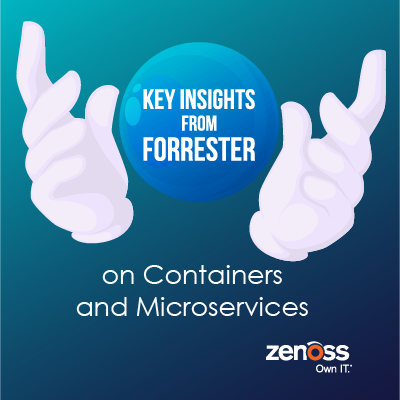
The recently released Forrester Research report, Monitoring Containerized Microservices? Elevate Your Metrics, offers great insight into what infrastructure and operations (I&O) leaders should consider when developing their technology and metric strategies for monitoring microservices and container-based applications.
In the opening passage, the analyst notes: “Given the highly ephemeral nature, large volume, and intricate interdependencies of microservices, monitoring approaches have had to evolve. Rather than looking at a discrete service from an up/down perspective, key metrics need to address the aggregate health of a service, such as overall response times between a microservice and downstream components.”
We have been working closely with customers on monitoring containers and microservices, and we couldn’t agree more with Forrester on this. You can check out the full report here, but here are some of the key takeaways:
Take Advantage of Intelligent Automation to Monitor at Scale
According to the Forrester survey in 2018, 53% of global infrastructure decision-makers reported that their organizations are implementing or have implemented microservices or container architecture to some degree.
One of the many challenges in enterprise IT operations environments is appropriately detecting and responding to events. IT Ops teams need to identify definitive root cause by leveraging model-informed machine learning to reduce event “noise.” While containerized microservices help digital businesses support the scale and speed, these ephemeral technologies dramatically increase the complexity of managing your IT infrastructure.
According to the report: “Machine learning/AI boosts a team’s ability to filter for only meaningful alerts instead of dealing with ‘noise.’ This leads to far better business outcomes, which fosters a growing sentiment of success for the team.”
Containerized Microservices Monitoring Solutions are Advancing
The ephemeral nature of containers helps IT teams to rapidly deploy and iterate faster, but monitoring and troubleshooting them is challenging. You need tools with the ability to capture every single system call on a host, give deep visibility into how any application, container, host or network performs, and interface with the orchestration master. This not only allows you to collect machine data but also provides the ability to capture context of the distributed system.
As the report notes: “Monitoring solutions with advanced capabilities can give operations teams further visibility into microservice-based application behaviors. Tools that provide automated instrumentation as well as highly scalable, real-time dependency mapping across the application and infrastructure stack and that can perform distributed tracing to track composite service transactions can provide more depth and root-cause analysis capabilities.”
Establish an Adaptive, Business-Oriented Monitoring Strategy
One of the key recommendations for I&O leaders was that “the new monitoring standard will be the key to its successful deployment and adoption” by their DevOps and IT Ops teams. As the report states: “The world has shifted from looking at enterprise infrastructure performance from the bottom up to a top-down, service outcome model. Customer and employee experience are now key metrics. Don’t be left behind because you’re focusing on server uptime when overall time to service a user request is far more important.”
IT infrastructure for applications today spans across traditional data center equipment, newer hyperconverged infrastructure, and an ever-growing incursion across multiple public cloud vendors. The key element in managing this entire environment is quality data collection combined with derived insights across these siloed infrastructure. The need for real-time streaming data is only part of the challenge. To obtain the full context, information from the deep infrastructure must be combined with data from the infrastructure with more real-time collection. Stitching these two related but often isolated datasets requires machine learning to highlight the information for faster automation and remediation.
According to the report: “Given the crucial need to produce exacting business insights from enterprise infrastructure and application data, consider building an enterprise monitoring team or center of excellence. Having one team dedicated to the overall monitoring architecture, which includes support for containerized microservices, will help standardize efforts and avoid proliferation of siloed solutions.”
As you evaluate solutions for the container and microservices monitoring in your organization, you should shortlist vendors that properly address these trends. We were honored to be recognized as a Leader in The Forrester Wave™: Intelligent Application and Service Monitoring, Q2 2019.
Zenoss has provided infrastructure monitoring solutions to enterprises for well over a decade, and our new Zenoss Cloud SaaS offering continues the trend of offering the most capable solutions for IT monitoring as this market continues to evolve. If you’re interested in learning more about how Zenoss Cloud can set up your organization to be ready as IT monitoring transforms, please request a demo today.








